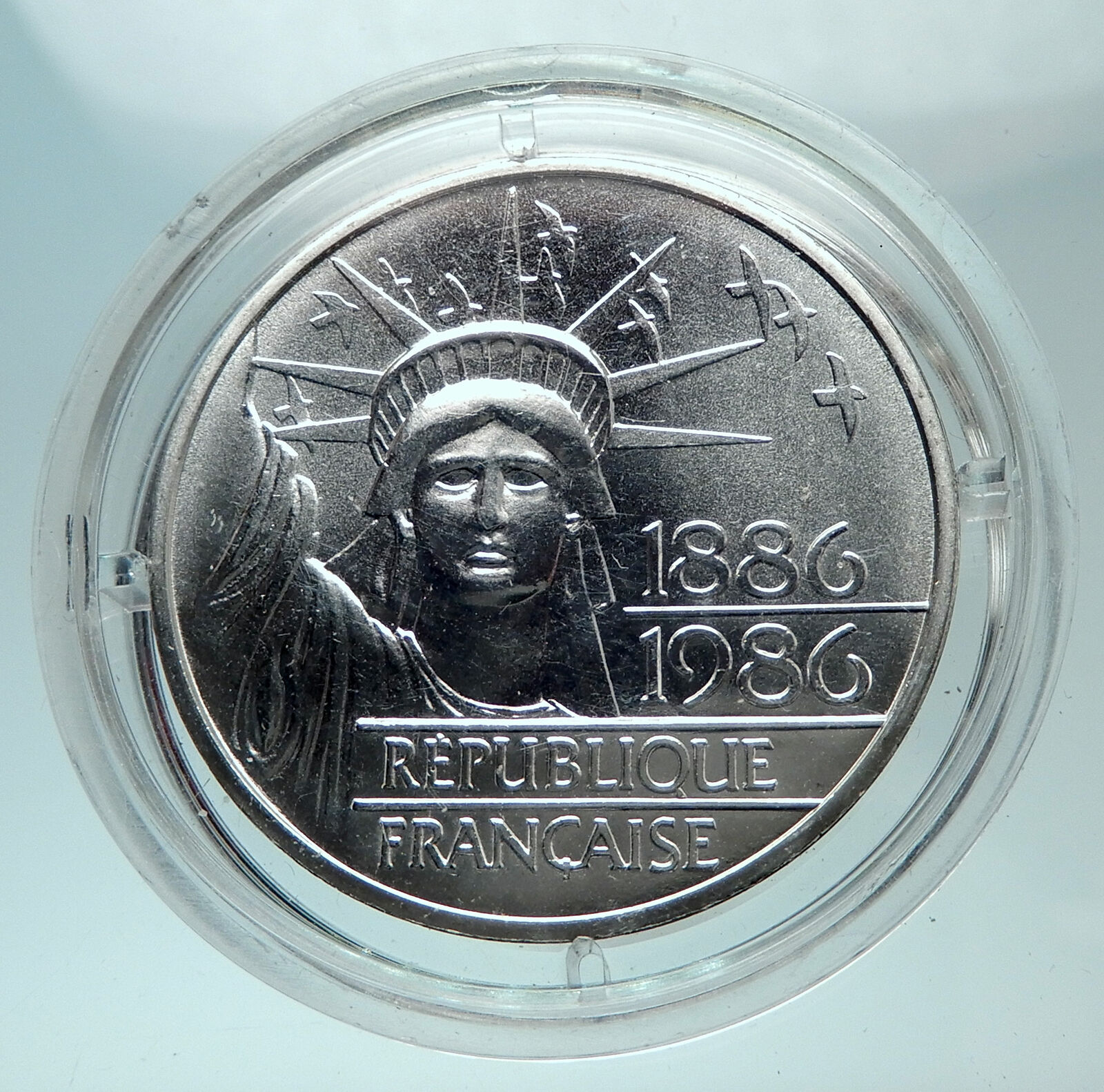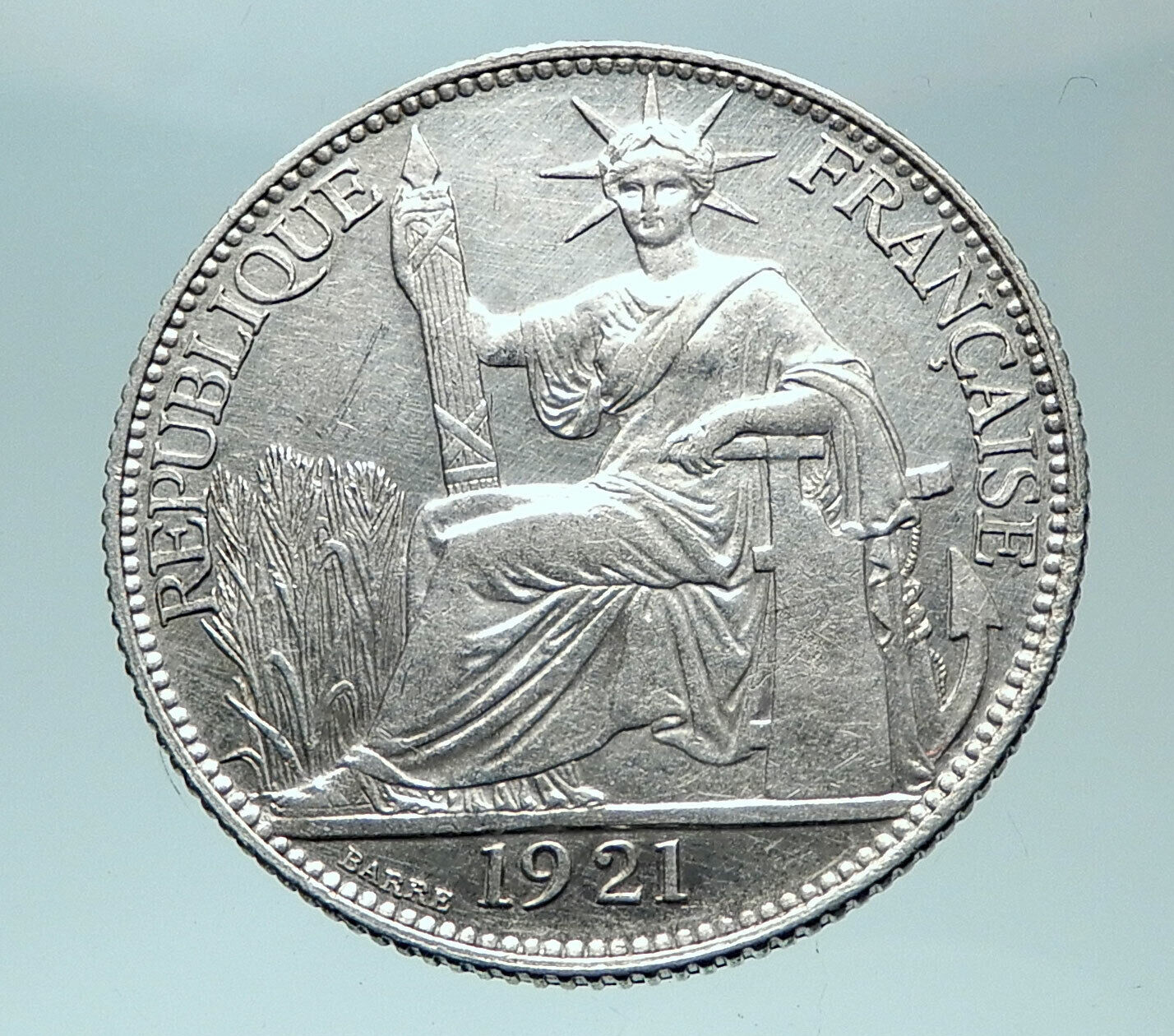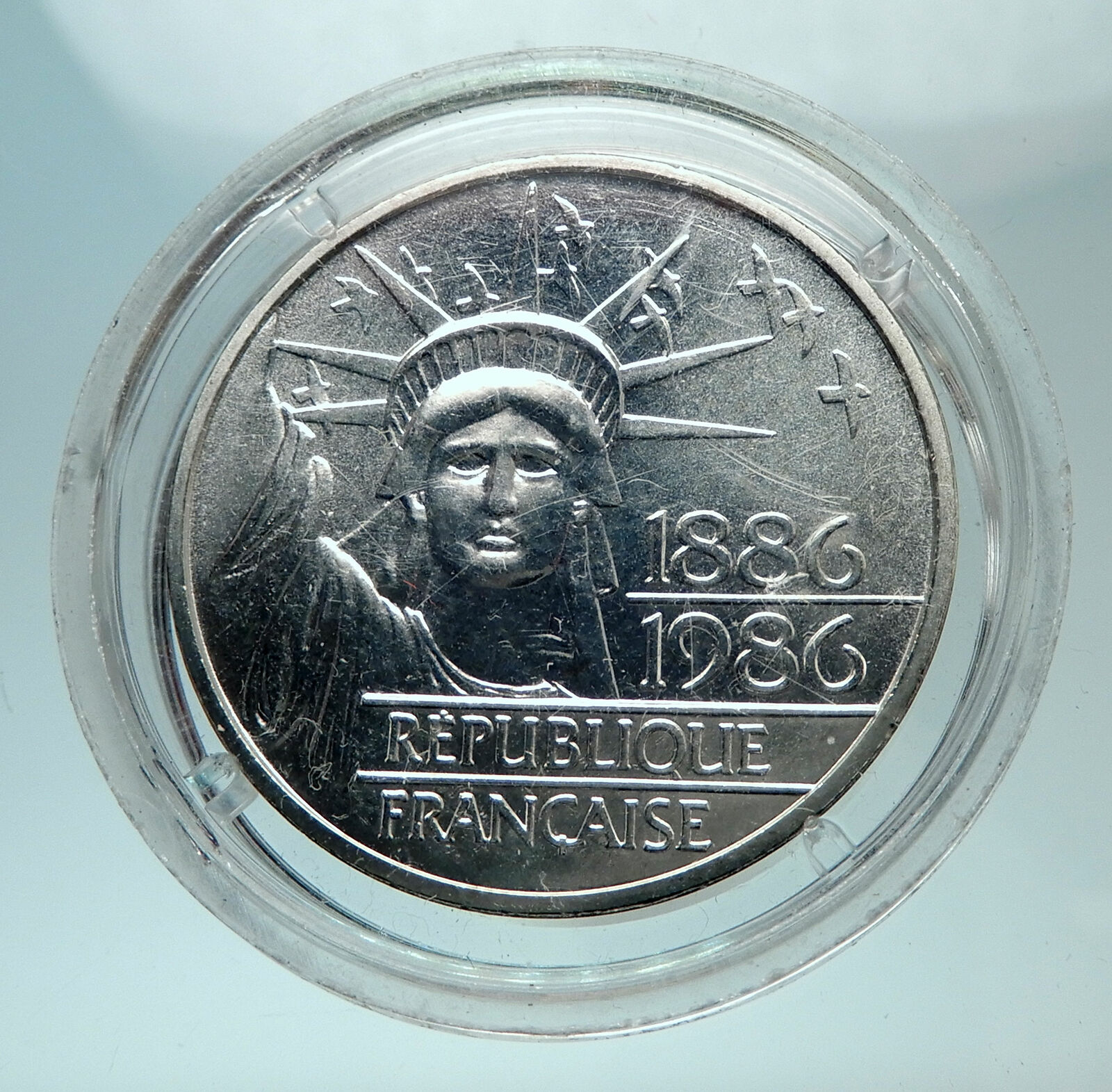|
France
Charles I Gonzaga
1611 Silver 1 Liard 25mm (3.67 grams)
Reference: PA# 6148, BD#1806 (1608-1614) | Engraver: Nicolas Briot
CAR•GONZ•D•NIV•ET•RETH• •16•, Charles facing right.
SVP•PRINCEPS•ARCHENSIS•, Crowned Coat-of-arms.
You are bidding on the exact item pictured, provided with a Certificate of Authenticity and Lifetime Guarantee of Authenticity.
Charles Gonzaga (Italian: Carlo I Gonzaga) (6 May 1580 – 22 September 1637) was Duke of Mantua and Duke of Montferrat from 1627 until his death. He was also Charles III Duke of Nevers and Rethel, as well as Prince of Arche and Charleville.
Born in Paris, he was the son of Louis Gonzaga, Duke of Nevers, and Princess Henriette of Cleves.
In 1600, as duke of Rethel, he founded, in Nevers, the Order of the Yellow Ribbon, soon forbidden by the King, due to its peculiar character.
In 1606, he decided the foundation of Charleville and the Principality of Arches ( fr ) He became 1st Prince of Arche and Charleville
 In 1612, Charles, a descendant of the Byzantine Emperor Andronicus II Palaeologus through his grandmother Margaret, who was of the line of Theodore I, Marquess of Montferrat, Andronicus’s son, claimed the throne of Constantinople, at the time the capital of the Ottoman Empire. He began plotting with Greek rebels, including the Maniots of Greece, who addressed him as “King Constantine Palaeologus”. When the Ottoman authorities heard about this, they sent an army of 20,000 men and 70 ships to invade Mani. They succeeded in ravaging the Mani Peninsula and imposing taxes on the Maniots. This caused Charles to move more actively for his crusade. He sent envoys to the courts of Europe looking for support. In 1619, he recruited six ships and some five thousand men, but he was forced to abort the mission because of the beginning of the Thirty Years’ War. In 1612, Charles, a descendant of the Byzantine Emperor Andronicus II Palaeologus through his grandmother Margaret, who was of the line of Theodore I, Marquess of Montferrat, Andronicus’s son, claimed the throne of Constantinople, at the time the capital of the Ottoman Empire. He began plotting with Greek rebels, including the Maniots of Greece, who addressed him as “King Constantine Palaeologus”. When the Ottoman authorities heard about this, they sent an army of 20,000 men and 70 ships to invade Mani. They succeeded in ravaging the Mani Peninsula and imposing taxes on the Maniots. This caused Charles to move more actively for his crusade. He sent envoys to the courts of Europe looking for support. In 1619, he recruited six ships and some five thousand men, but he was forced to abort the mission because of the beginning of the Thirty Years’ War.
At the death of the last legitimate male heir of the Gonzaga line in the Duchy of Mantua, Vincenzo II (1627), Charles inherited the title through an agreement. His son was married to Maria Gonzaga, daughter of former Duke Francesco IV.
However, his succession spurred the enmity of Charles Emmanuel I of Savoy, who aimed at the Gonzaga lands of Montferrat, and, above all, of Spain and the Holy Roman Empire, which did not like a pro-French ruler in Mantua. This led to the War of the Mantuan Succession. In 1629 emperor Ferdinand II sent a Landsknecht army to besiege Mantua, Charles left without the promised support from Louis XIII of France. The siege lasted until July 1630, when the city, already struck by a plague, was brutally sacked. Mantua never recovered from this disaster.
The subsequent diplomatic maneuvers allowed Charles, who had fled to the Papal States, to return to the duchy in 1631, although not without concessions to the House of Savoy and to the Gonzaga of Guastalla. The fiscal situation of the Mantuan territory was poor, but he was able to facilitate some economic recovery in the following years.
Charles died in 1637. His successor was his grandson Charles II, initially under the regency of Maria Gonzaga, Charles I’s daughter-in-law.
 France, officially the French Republic (French: République française), is a sovereign state comprising territory in western Europe and several overseas regions and territories. The European part of France, called Metropolitan France, extends from the Mediterranean Sea to the English Channel and the North Sea, and from the Rhine to the Atlantic Ocean. France spans 640,679 square kilometres (247,368 sq mi) and has a total population of 67 million. It is a unitary semi-presidential republic with the capital in Paris, the country’s largest city and main cultural and commercial centre. The Constitution of France establishes the state as secular and democratic, with its sovereignty derived from the people. France, officially the French Republic (French: République française), is a sovereign state comprising territory in western Europe and several overseas regions and territories. The European part of France, called Metropolitan France, extends from the Mediterranean Sea to the English Channel and the North Sea, and from the Rhine to the Atlantic Ocean. France spans 640,679 square kilometres (247,368 sq mi) and has a total population of 67 million. It is a unitary semi-presidential republic with the capital in Paris, the country’s largest city and main cultural and commercial centre. The Constitution of France establishes the state as secular and democratic, with its sovereignty derived from the people.
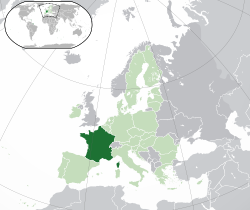
During the Iron Age, what is now Metropolitan France was inhabited by the Gauls, a Celtic people. The Gauls were conquered in 51 BC by the Roman Empire, which held Gaul until 486. The Gallo-Romans faced raids and migration from the Germanic Franks, who dominated the region for hundreds of years, eventually creating the medieval Kingdom of France. France emerged as a major European power in the Late Middle Ages, with its victory in the Hundred Years’ War (1337 to 1453) strengthening French state-building and paving the way for a future centralized absolute monarchy. During the Renaissance, France experienced a vast cultural development and established the beginning of a global colonial empire. The 16th century was dominated by religious civil wars between Catholics and Protestants (Huguenots).
 France became Europe’s dominant cultural, political, and military power under Louis XIV. French philosophers played a key role in the Age of Enlightenment during the 18th century. In 1778, France became the first and the main ally of the new United States in the American Revolutionary War. In the late 18th century, the absolute monarchy was overthrown in the French Revolution. Among its legacies was the Declaration of the Rights of Man and of the Citizen, one of the earliest documents on human rights, which expresses the nation’s ideals to this day. France became one of modern history’s earliest republics until Napoleon took power and launched the First French Empire in 1804. Fighting against a complex set of coalitions during the Napoleonic Wars, he dominated European affairs for over a decade and had a long-lasting impact on Western culture. Following the collapse of the Empire, France endured a tumultuous succession of governments: the monarchy was restored, it was replaced in 1830 by a constitutional monarchy, then briefly by a Second Republic, and then by a Second Empire, until a more lasting French Third Republic was established in 1870. By the 1905 law, France adopted a strict form of secularism, called laïcité, which has become an important federative principle in the modern French society. France became Europe’s dominant cultural, political, and military power under Louis XIV. French philosophers played a key role in the Age of Enlightenment during the 18th century. In 1778, France became the first and the main ally of the new United States in the American Revolutionary War. In the late 18th century, the absolute monarchy was overthrown in the French Revolution. Among its legacies was the Declaration of the Rights of Man and of the Citizen, one of the earliest documents on human rights, which expresses the nation’s ideals to this day. France became one of modern history’s earliest republics until Napoleon took power and launched the First French Empire in 1804. Fighting against a complex set of coalitions during the Napoleonic Wars, he dominated European affairs for over a decade and had a long-lasting impact on Western culture. Following the collapse of the Empire, France endured a tumultuous succession of governments: the monarchy was restored, it was replaced in 1830 by a constitutional monarchy, then briefly by a Second Republic, and then by a Second Empire, until a more lasting French Third Republic was established in 1870. By the 1905 law, France adopted a strict form of secularism, called laïcité, which has become an important federative principle in the modern French society.
France reached its territorial height during the 19th and early 20th centuries, when it ultimately possessed the second-largest colonial empire in the world. In World War I, France was one of the main winners as part of the Triple Entente alliance fighting against the Central Powers. France was also one of the Allied Powers in World War II, but came under occupation by the Axis Powers in 1940. Following liberation in 1944, a Fourth Republic was established and later dissolved in the course of the Algerian War. The Fifth Republic, led by Charles de Gaulle, was formed in 1958 and remains to this day. Following World War II, most of the empire became decolonized.
Throughout its long history, France has been a leading global center of culture, making significant contributions to art, science, and philosophy. It hosts Europe’s third-largest number of cultural UNESCO World Heritage Sites (after Italy and Spain) and receives around 83 million foreign tourists annually, the most of any country in the world. France remains a great power with significant cultural, economic, military, and political influence. It is a developed country with the world’s sixth-largest economy by nominal GDP and eight-largest by purchasing power parity. According to Credit Suisse, France is the fourth wealthiest nation in the world in terms of aggregate household wealth. It also possesses the world’s second-largest exclusive economic zone (EEZ), covering 11,035,000 square kilometres (4,261,000 sq mi).
French citizens enjoy a high standard of living, and the country performs well in international rankings of education, health care, life expectancy, civil liberties, and human development. France is a founding member of the United Nations, where it serves as one of the five permanent members of the UN Security Council. It is a member of the Group of 7, North Atlantic Treaty Organization (NATO), Organisation for Economic Co-operation and Development (OECD), the World Trade Organization (WTO), and La Francophonie. France is a founding and leading member state of the European Union (EU).
|




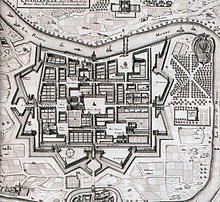
 In 1612, Charles, a descendant of the Byzantine Emperor Andronicus II Palaeologus through his grandmother Margaret, who was of the line of Theodore I, Marquess of Montferrat, Andronicus’s son, claimed the throne of Constantinople, at the time the capital of the Ottoman Empire. He began plotting with Greek rebels, including the Maniots of Greece, who addressed him as “King Constantine Palaeologus”. When the Ottoman authorities heard about this, they sent an army of 20,000 men and 70 ships to invade Mani. They succeeded in ravaging the Mani Peninsula and imposing taxes on the Maniots. This caused Charles to move more actively for his crusade. He sent envoys to the courts of Europe looking for support. In 1619, he recruited six ships and some five thousand men, but he was forced to abort the mission because of the beginning of the Thirty Years’ War.
In 1612, Charles, a descendant of the Byzantine Emperor Andronicus II Palaeologus through his grandmother Margaret, who was of the line of Theodore I, Marquess of Montferrat, Andronicus’s son, claimed the throne of Constantinople, at the time the capital of the Ottoman Empire. He began plotting with Greek rebels, including the Maniots of Greece, who addressed him as “King Constantine Palaeologus”. When the Ottoman authorities heard about this, they sent an army of 20,000 men and 70 ships to invade Mani. They succeeded in ravaging the Mani Peninsula and imposing taxes on the Maniots. This caused Charles to move more actively for his crusade. He sent envoys to the courts of Europe looking for support. In 1619, he recruited six ships and some five thousand men, but he was forced to abort the mission because of the beginning of the Thirty Years’ War. France, officially the French Republic (French: République française), is a sovereign state comprising territory in western Europe and several overseas regions and territories. The European part of France, called Metropolitan France, extends from the Mediterranean Sea to the English Channel and the North Sea, and from the Rhine to the Atlantic Ocean. France spans 640,679 square kilometres (247,368 sq mi) and has a total population of 67 million. It is a unitary semi-presidential republic with the capital in Paris, the country’s largest city and main cultural and commercial centre. The Constitution of France establishes the state as secular and democratic, with its sovereignty derived from the people.
France, officially the French Republic (French: République française), is a sovereign state comprising territory in western Europe and several overseas regions and territories. The European part of France, called Metropolitan France, extends from the Mediterranean Sea to the English Channel and the North Sea, and from the Rhine to the Atlantic Ocean. France spans 640,679 square kilometres (247,368 sq mi) and has a total population of 67 million. It is a unitary semi-presidential republic with the capital in Paris, the country’s largest city and main cultural and commercial centre. The Constitution of France establishes the state as secular and democratic, with its sovereignty derived from the people.
 France became Europe’s dominant cultural, political, and military power under Louis XIV. French philosophers played a key role in the Age of Enlightenment during the 18th century. In 1778, France became the first and the main ally of the new United States in the American Revolutionary War. In the late 18th century, the absolute monarchy was overthrown in the French Revolution. Among its legacies was the Declaration of the Rights of Man and of the Citizen, one of the earliest documents on human rights, which expresses the nation’s ideals to this day. France became one of modern history’s earliest republics until Napoleon took power and launched the First French Empire in 1804. Fighting against a complex set of coalitions during the Napoleonic Wars, he dominated European affairs for over a decade and had a long-lasting impact on Western culture. Following the collapse of the Empire, France endured a tumultuous succession of governments: the monarchy was restored, it was replaced in 1830 by a constitutional monarchy, then briefly by a Second Republic, and then by a Second Empire, until a more lasting French Third Republic was established in 1870. By the 1905 law, France adopted a strict form of secularism, called laïcité, which has become an important federative principle in the modern French society.
France became Europe’s dominant cultural, political, and military power under Louis XIV. French philosophers played a key role in the Age of Enlightenment during the 18th century. In 1778, France became the first and the main ally of the new United States in the American Revolutionary War. In the late 18th century, the absolute monarchy was overthrown in the French Revolution. Among its legacies was the Declaration of the Rights of Man and of the Citizen, one of the earliest documents on human rights, which expresses the nation’s ideals to this day. France became one of modern history’s earliest republics until Napoleon took power and launched the First French Empire in 1804. Fighting against a complex set of coalitions during the Napoleonic Wars, he dominated European affairs for over a decade and had a long-lasting impact on Western culture. Following the collapse of the Empire, France endured a tumultuous succession of governments: the monarchy was restored, it was replaced in 1830 by a constitutional monarchy, then briefly by a Second Republic, and then by a Second Empire, until a more lasting French Third Republic was established in 1870. By the 1905 law, France adopted a strict form of secularism, called laïcité, which has become an important federative principle in the modern French society.


